Walking towards a greener future
In 2020, we founded Liber Larus at NEXUS, University of Leeds. Our team consists of scientists, experts and specialists in energy, environment, economics, food science, and wider areas. We leverage the expertise and resources of the university’s laboratories to drive our leading scientific and technological projects in energy and environment science.
Our name, from the Latin ‘free seagull,’ reflects our practical approach to sustainability. Seagulls play an essential role in the global ecosystem, connecting coastlines and oceans. Just like these birds, we are committed to connecting different worlds. At Liber Larus, we enable cross-border exchanges and cooperation to advance sustainable development technologies, particularly in energy and environmental protection.
GET IN TOUCHPowering clean energy with microgrids
The United Nations (UN) aims to ensure every country - developed and developing - has access to affordable, reliable, sustainable energy sources. However, millions of people in some developing countries still don't have access to electricity. The UN estimated that by 2030, 660 million people in Sub-Saharan Africa and Southeast Asian countries will still be without electricity access.
Reliable energy from microgrids empowers under-resourced regions, driving sustainable economic development and raising living standards. This, in turn, advances eight UN Sustainable Development Goals (SDGs), including those focused on climate action, economic growth and social justice.The demand for sustainable energy
- Microgrid installations were six times higher in 2024 than 2018
- Rapid growth expected in coming years
- Substantial funding increase over the past 15 years
- Over 3.1 billion USD committed to 377 mini-grid projects in 2023
Why are microgrids important?
Microgrid systems are essential to decarbonising the global energy supply. When used, microgrids can:
- Provide reliable and high-quality electricity to rural populations and businesses
- Enable local energy production and storage, improving power supply efficiency, reliability and resilience
- Eliminate the need for costly maintenance and infrastructure upgrades
- Harness renewable energy to provide low-cost, clean and affordable electricity
- Strengthen local resilience by improving the operation and stability of regional power grids
- Deliver unprecedented dynamic response capabilities for power systems
- Support local energy self-sufficiency
- Minimise greenhouse gas emissions
- !mprove air quality and, in turn, protect public health
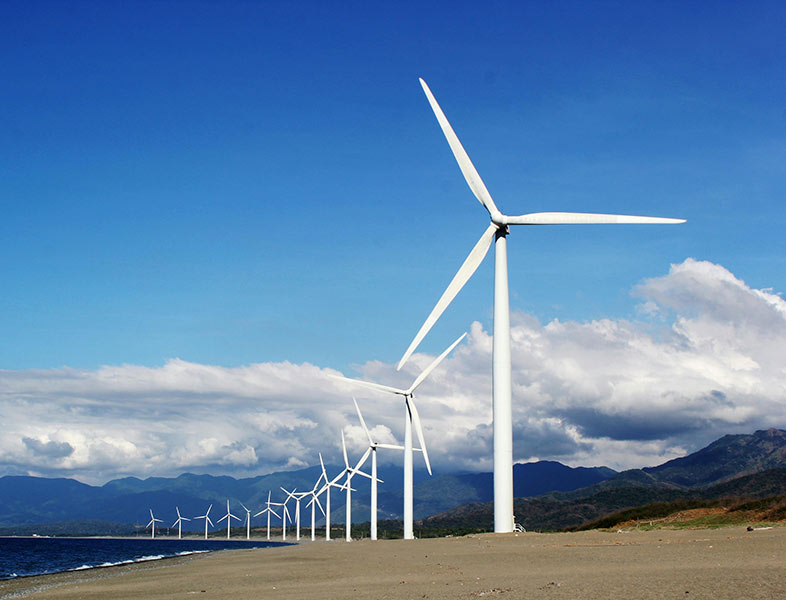
About SIMCE
Smart Integrated Hybrid Microgrids for Clean Energies (SIMCE) is an optimisation tool for low-carbon, hybrid microgrid design and planning. Our tool is ideal for solar, wind, energy storage systems and diesel/gas engine generators with peak load demands ranging from a few kW to 3+ MW.
SIMCE compares microgrid configurations and allows energy suppliers to tailor designs based on electrical demand, available resources and desired battery storage. It also assesses the health impact of reduced air pollution, helping users minimise costs and emissions based on their chosen scenario.
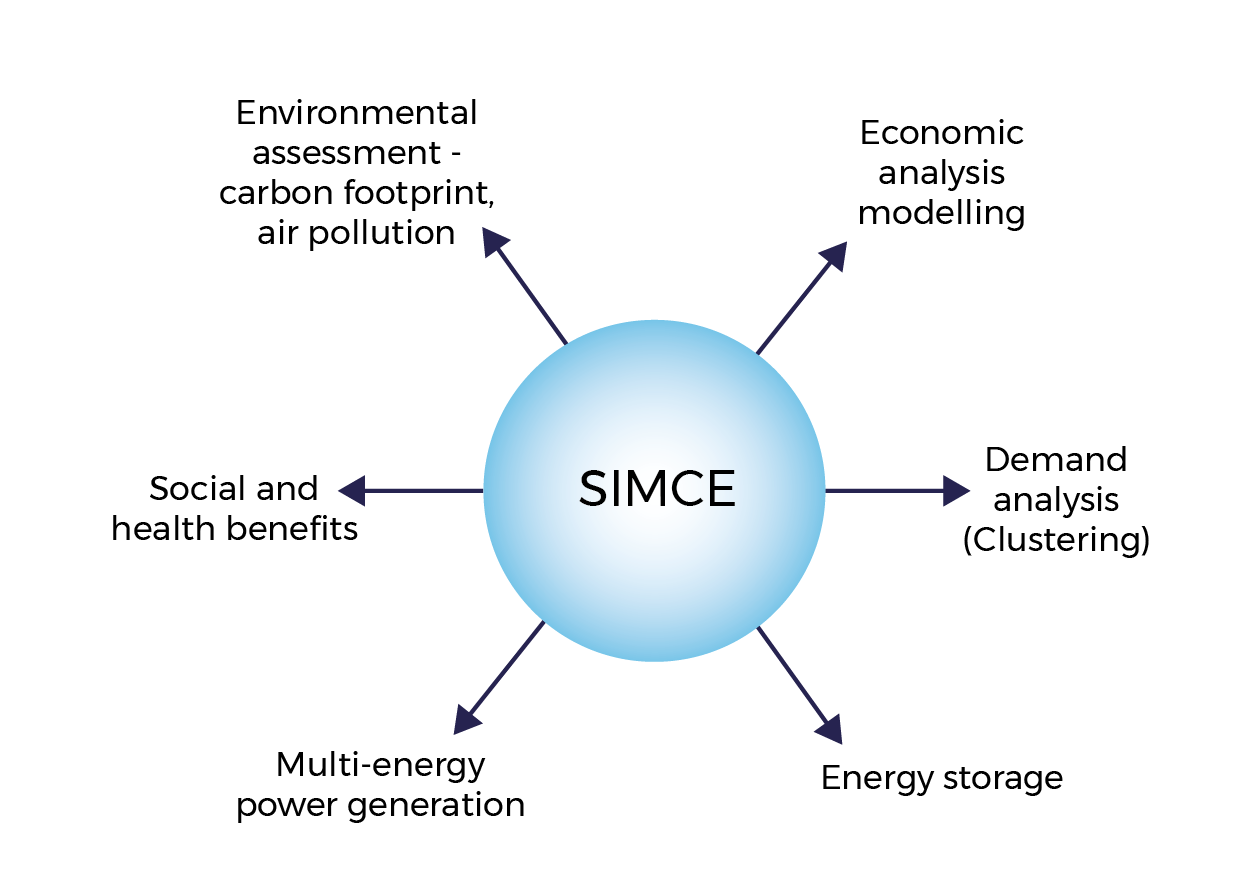
Exploring the SIMCE dashboard
Our dashboard provides complete control over microgrid design and optimisation processes. You can choose from eleven input fields, which define key parameters such as load profile, battery storage and available energy resources like solar, wind and diesel. The scenario selections for each parameter are as follows:
Load profile
For SIMCE to work, you need hourly electricity demand profiles, hourly PV power outputs and hourly wind speed profiles from the microgrid location.
Demand data can be based on past usage (using clustering techniques to create high, medium and low load profiles) or future projections. Once you upload the data, select your optimisation scenario (high, medium, or low) in the dashboard.
PV system
When designing a solar microgrid, you can adjust three parameters: PV share, performance and cost.
PV share determines the solar capacity, supplying 100%, 75%, or 50% of peak daylight load. PV performance reflects expected output based on local solar radiation data, while PV cost represents estimated price ranges for hybrid microgrids.
Wind turbine system
For microgrids with a wind turbine, you can choose from six wind speed levels - high, moderate, mild, low, very low and constant.
Wind speed levels depend on the wind profile data for the microgrid's location.
Diesel generator & battery options
If you have a diesel generator that is optimised for generating electricity (load factor is below 50%), you can choose to include storage batteries or not. You can then select the battery type and capacity.
For non-optimised generators, you will have to add energy storage batteries, as well as the battery type and capacity.
Diesel generator pollutant emissions
On the dashboard, you can select between two options for assessing diesel generator emissions: Tank to Wheel (TTW) and Well to Wheel (WTW).
The TTW option considers the tailpipe emissions, whereas WTW assesses the emissions from both the tailpipe and fuel production.
Gain insightful results on your microgrid design
SIMCE contains several results dashboards so you can get the most from your microgrid. The three dashboards include:
- Optimisation results: This dashboard displays seven key outputs of your microgrid design, such as life cycle cost (LCC), levelized cost of electricity (LCOE), carbon cost and fuel selection.
- Cost analysis: The second report shows the LCC and LCOE values in different currencies
- Power generation: The last dashboard allows you to visualise the optimised power generation curves and load demand curves. You can also calculate the potential life expectancy gains based on particulate matter (PM2.5) concentration. With this data, you’ll see the potential life expectancy gain in years based on WHO global air quality standards.

Unlock potential value with FEB analysis
SIMCE allows you to conduct a financial and environmental benefit (FEB) analysis of your microgrid designs.
The radar chart highlights the recommended microgrid designs with the lowest LCOE and emissions, making it easy to identify the most beneficial systems.

Successful applications
SIMCE is a trusted microgrid optimisation tool used to plan projects around the world.
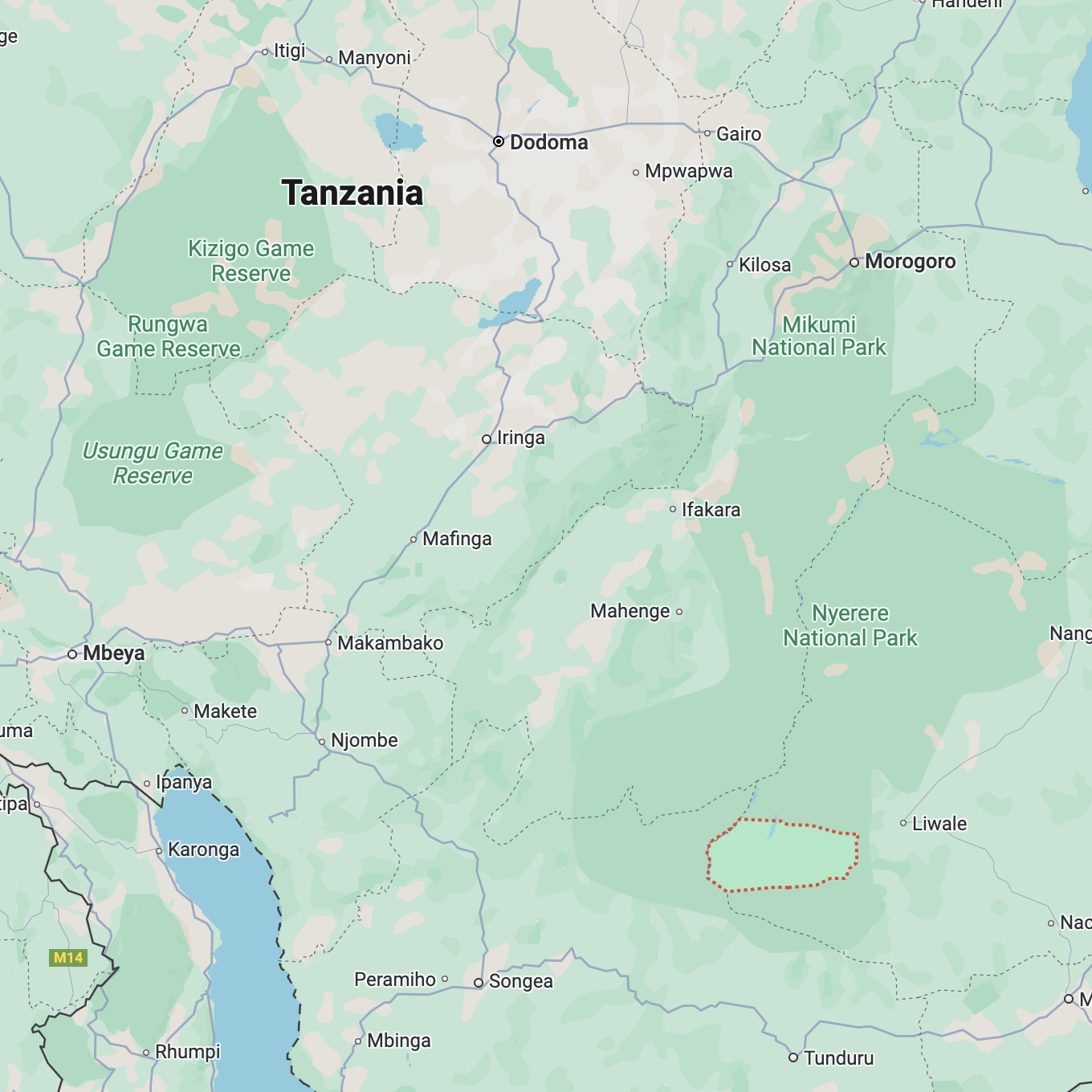
Mpigamiti Project, Tanzania
We used SIMCE to optimise microgrid plans for Mpigamiti, a rural ward in Tanzania with low electricity access. We modelled 350 households with high, medium and low electricity demand scenarios.
We compared eight optimised microgrid designs using a radar diagram. This allowed us to identify the most cost-effective and environmentally friendly solutions based on their LCOE values and environmental impacts (CO2e, PM2.5 and NOx emissions).

Xinjiang Project, China
We designed a 3 MW microgrid for an industrial park in Xinjiang. We modelled the electricity demand based on typical profiles of the park and derived wind speed profiles using a clustering method with six categories (high to constant).
The final microgrid design incorporated wind turbines, solar, battery energy storage and diesel generators, with a power output of 3 MW.
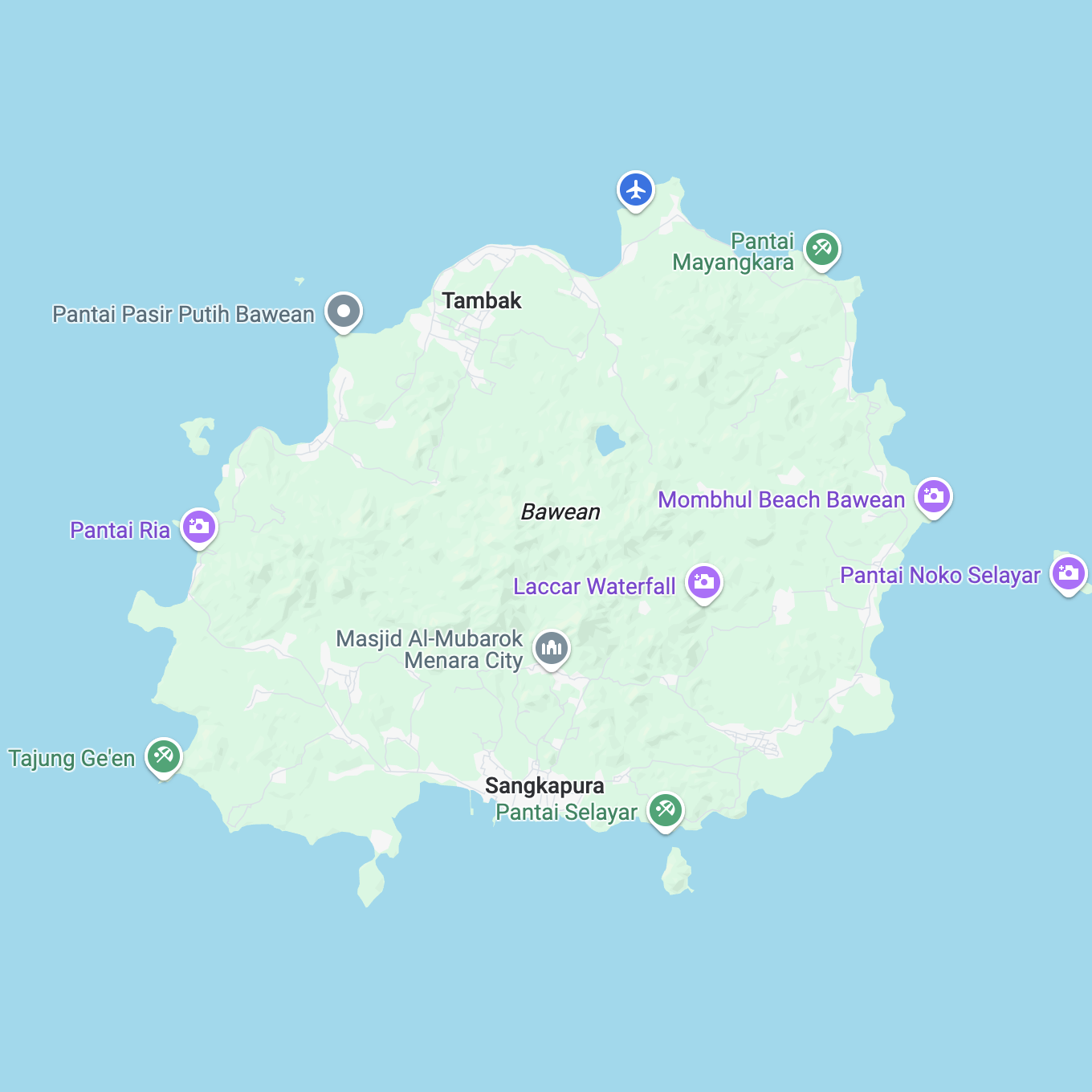
Bawean Project, Indonesia
The Bawean Island project focused on designing a hybrid microgrid for a rural island in the Java region of Indonesia. Located 160 km from the nearest city, Bawean Island has an area of nearly 200 km2 and a population of 80,000.
The island has experienced high electricity demand growth, currently supplied by diesel and gas engines with a peak load of 6 MW. We designed a hybrid microgrid incorporating the existing diesel and gas engines and adding PV, wind turbines and battery energy storage systems.
The future of SIMCE
SIMCE adapts to diverse microgrid needs, from remote off-grid communities to urban centres with building-integrated photovoltaics (BIPV). Whether it's maximising renewable energy use or helping carbon-intensive industries achieve neutrality, SIMCE provides tailored optimisation for a variety of projects.
With regular investment, we plan to include more energy resources, such as H2 and other zero-carbon fuels, as well as more databases and AI functionality.
GET IN TOUCH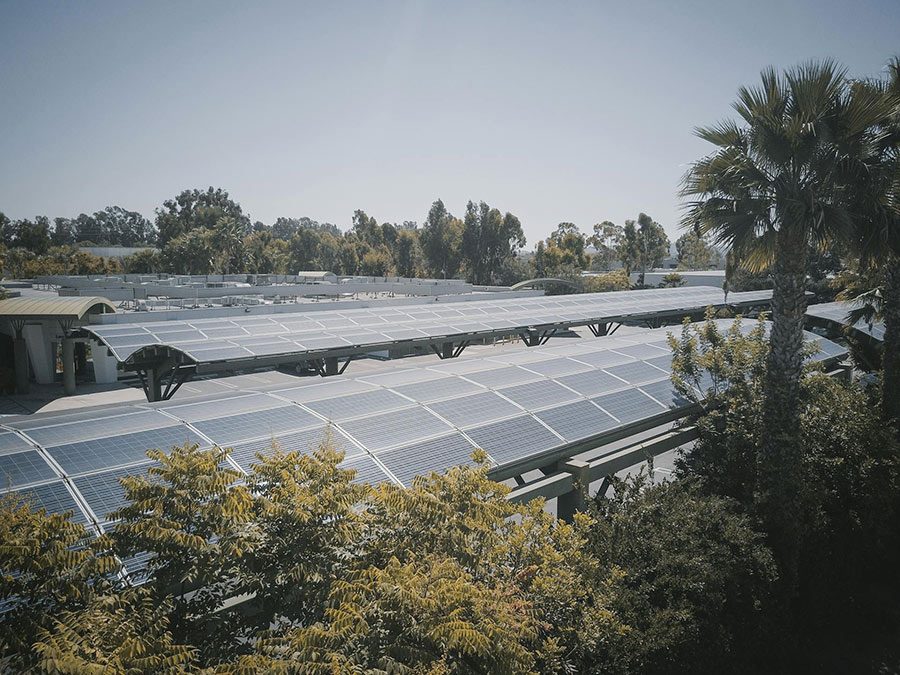
Contact Us
If you’d like to know more about SIMCE, contact our team, and we’ll get in touch.
Take the first step now: talk to us

